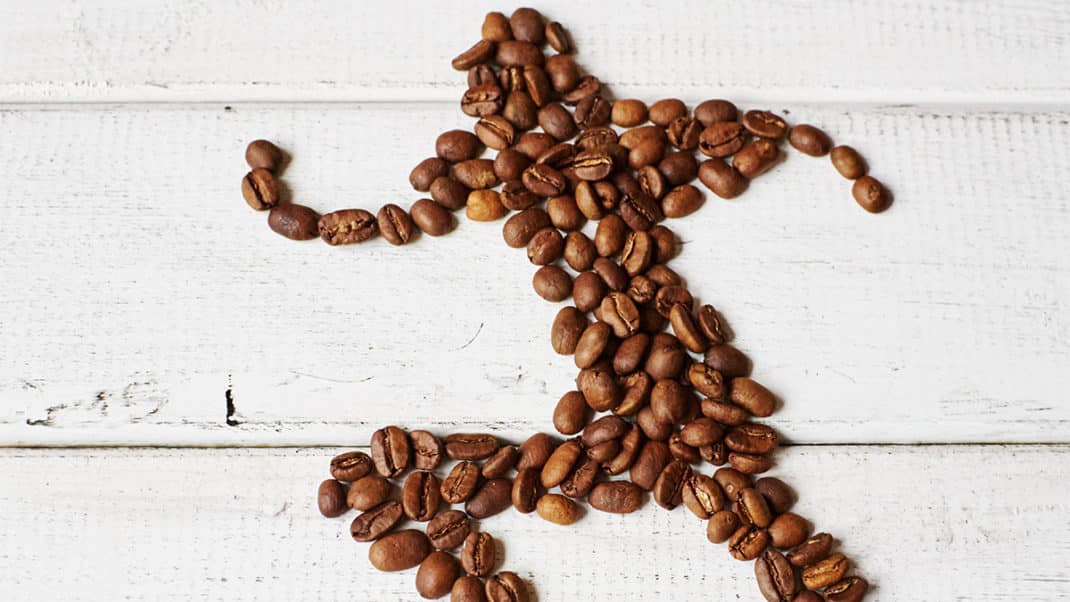Neuromuscular Power Training for Athlete Clients
These power training tips will help sports enthusiasts and competitive athletes deliver maximal neuromuscular power.
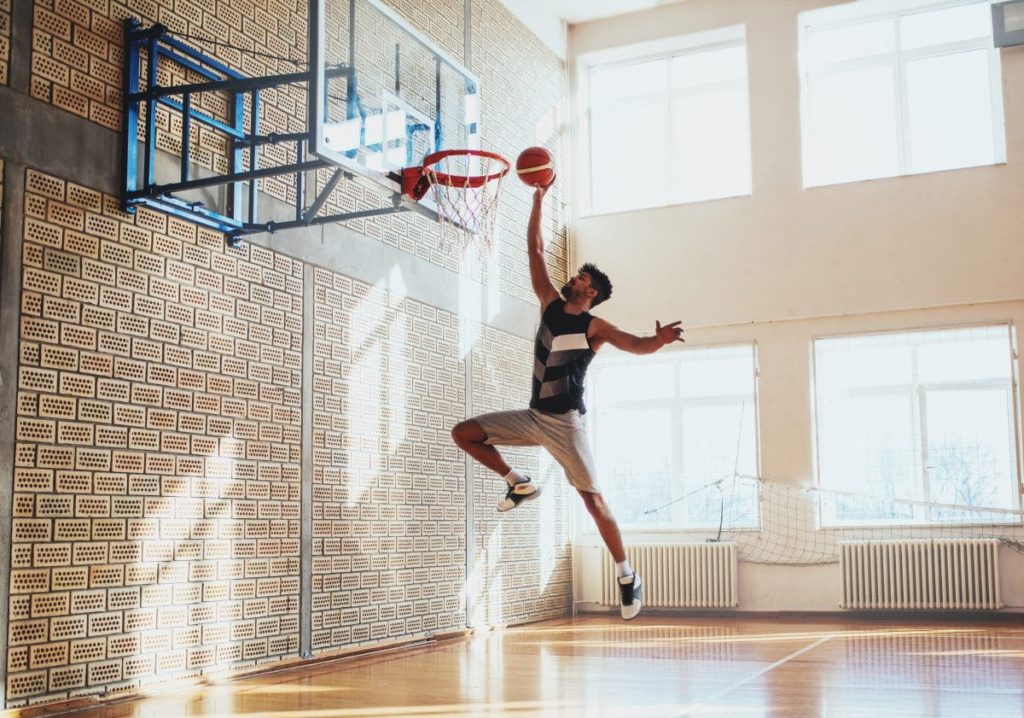
STUDIES REVIEWED: Cormie, P., McGuigan, M.R., & Newton, R.U. 2011a. Developing maximal neuromuscular power: Part 1—Biological basis of maximal power production. Sports Medicine, 41 (1), 17–38.
Cormie, P., McGuigan, M.R., & Newton, R.U. 2011b. Developing maximal neuromuscular power: Part 2—Training considerations for improving maximal power production. Sports Medicine, 41 (2), 125–46.
Competitive athletes often use power training for reaching peak neuromuscular power to excel at the complex movements their sports require. Many personal training clients want to apply the same principle to their favorite sports.
With the right power training, fitness competitors can improve their tennis serve, golf swing, running speed, volleyball spike, soccer performance, basketball vertical jump and so on.
To help these clients, you need to understand the fundamentals of neuromuscular power development, and two papers from Cormie, McGuigan & Newton provide some excellent resources. You also need practical ideas for incorporating power training. This month’s column will help get you there.
What Is Peak Neuromuscular Power?
A quick refresher: Strength is the ability to move against resistance. Power is the ability to deploy strength in rapid-fire bursts.
The dynamic motions of sport require peak power—that is, the most strength a muscular contraction can muster in one of these quick bursts. Sporting athletes depend on peak power for jumping, running, throwing, striking, swinging and kicking. Scientists prefer the term “neuromuscular power” (to just “power” itself) because neural factors—including motor unit recruitment, muscle fiber firing frequency and synchronization of a muscle’s contractile forces—are involved.
Neuromuscular power can be affected by muscle fatigue, stretch reflexes, elastic components in muscle, muscle temperature, joint configuration, muscle fiber type, pennation (muscle fiber alignment to movements) and the type of muscle contraction (concentric, eccentric and isometric).
See also: Complex Training: Pairing for Power
What Is the Strength and Power Relationship?
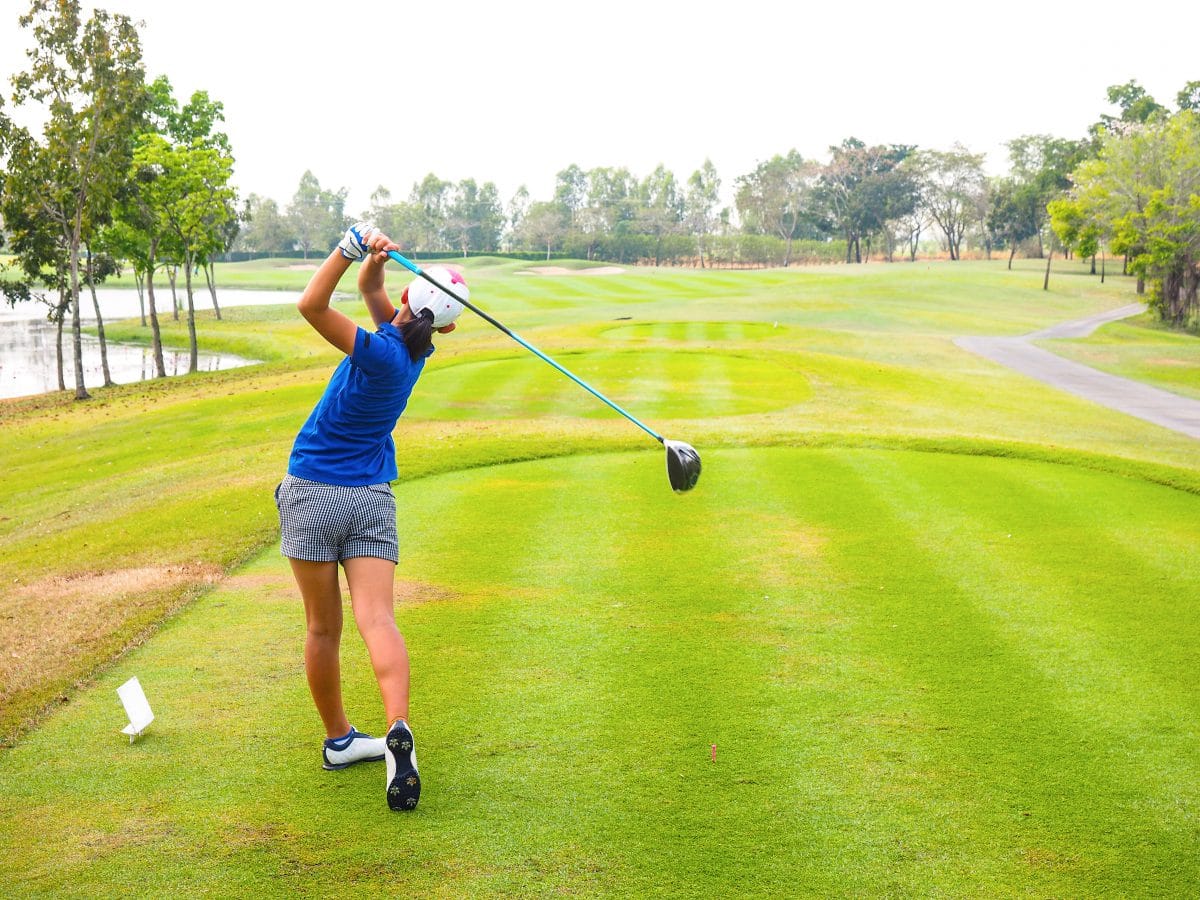
To excel in sports, an athlete must produce power in dynamic, multijoint movements.
Cormie, McGuigan & Newton note that people need to be relatively strong before they can produce a lot of power. The researchers point to several studies indicating that stronger participants produced more power than weaker ones. The science says that getting stronger increases the diameter of muscle fibers and triggers physiological factors (within muscle) that boost intramuscular coordination for power production.
Thus, a major take-home for fitness pros is that before designing power-producing exercises or programs for a client, they must develop the client’s foundational strength.
Power Training & Movement Pattern Specificity
To excel in sports, an athlete must produce power in dynamic, multijoint movements. The preferred method for achieving peak power depends on the nature of the movement pattern. As a trainer, your goal is to select exercises that strengthen muscles while following the movement patterns and ranges of motion required to play the competitive sport. Training programs that improve peak power include traditional resistance training, ballistic exercises, plyometrics and weightlifting, say Cormie and colleagues.
Traditional Resistance Training
Squats, bench presses and other traditional multijoint resistance exercises help enthusiasts develop the solid foundational strength they’ll need to improve their power. Cormie and colleagues explain that heavy-load training (≥80% of one-repetition maximum) is a viable way to develop power largely because it recruits the bigger, type 2 (fast-twitch) muscle fibers, which are considered predominantly responsible for powerful athletic performance.
However, traditional resistance exercises decelerate in the latter phase of the movement. Given that power is about speeding up, not slowing down, resistance training alone isn’t enough to maximize peak power. Thus, fitness pros need to employ more mechanically specific training concepts, such as ballistic exercises, plyometrics and weightlifting.
Ballistic Exercises
Ballistic movements include jump squats and bench press throws (of an object such as a medicine ball). Ballistic movements encourage clients to accelerate a movement pattern throughout the entire range of motion to the point of takeoff or release of a thrown object. The movement has no deceleration phase.
You can progress ballistic exercises by increasing the load—for example, by using a heavier medicine ball for the bench press throw or wearing a weighted vest on the jump squat. Cormie, McGuigan & Newton note that studies have used a variety of loads, from 0%–80% of l-RM, with a similar traditional resistance exercise. They note that force, power and muscle activation go higher during a ballistic movement because acceleration continues through the full range of motion.
Many researchers and coaches praise ballistic exercises for power development because the motions are generally more sport-specific than others, potentially providing adaptations that translate into better sporting performance. Ballistic exercises effectively increase peak power output in sport-specific movements and improve power production via a variety of loads, say Cormie and colleagues.
Plyometric Exercises
Plyometric exercises are ballistic movements that use little to no external resistance beyond body weight. Plyometrics also focus on the initial active stretch, which includes eccentric contraction of a muscle followed by rapid, shortening concentric contraction of the same muscle.
Plyometric exercises emphasize the initial prestretch in movements such as jumping, hopping, jumping rope, skipping, bounding, lunging, and doing jump squats or clap pushups.
Weightlifting Exercises
While resistance training exercises like the squat and bench press build foundational strength, several weightlifting exercises can boost power. Among them are the snatch, clean and jerk, hang/power clean, hang/power snatch, and high pull. Weightlifting moves are ballistic, since they require athletes to accelerate throughout the entire propulsive or pulling phase of the movement.
Weightlifting exercises are helpful because they produce lots of power across a variety of loads. Studies summarized by Cormie, McGuigan & Newton show that power output during weightlifting exercises is greatest at loads equivalent to 70%–85% of l-RM for a snatch or clean. Furthermore, movement patterns in weightlifting exercises are similar to athletic movements in many sports.
See also: Training for Everyday Athletes
The Velocity-Specific Power Training Controversy
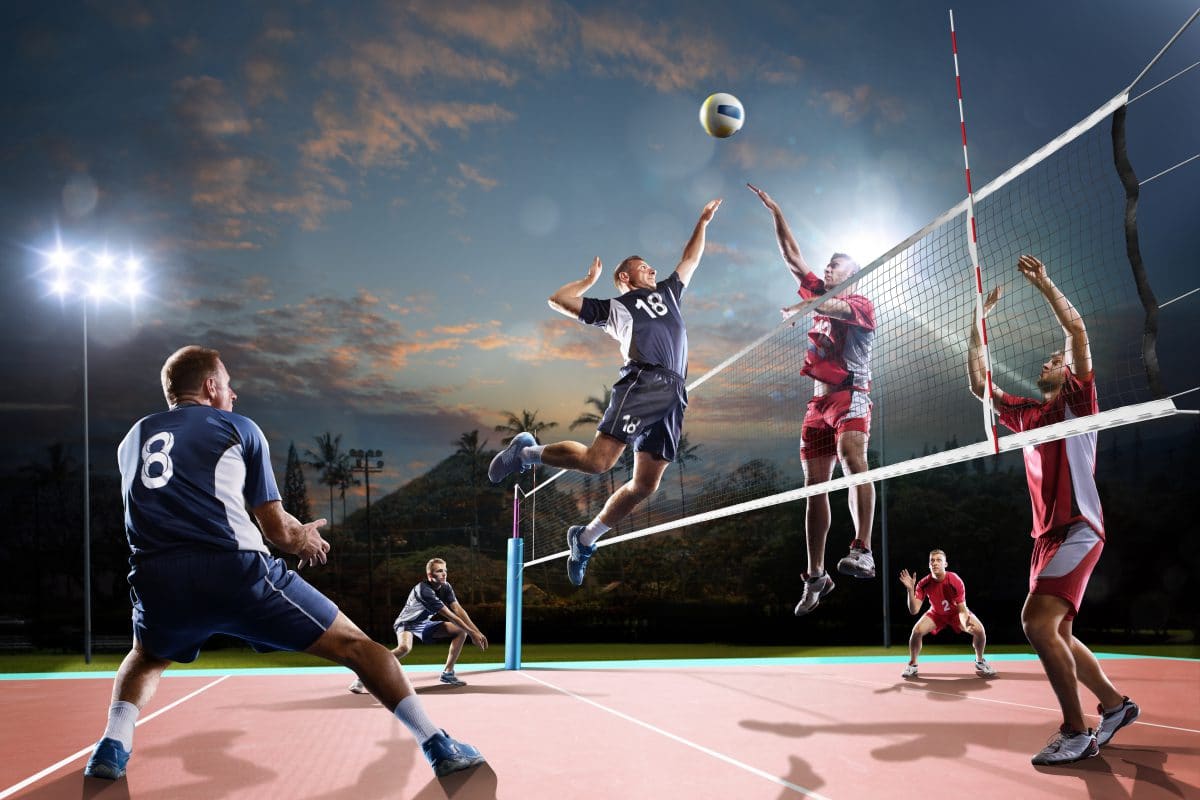
Fitness pros can add power-training exercises into a client’s program in a couple of meaningful ways.
As Cormie and colleagues explain, one velocity-specific theory of training suggests that optimal adaptations occur when participants train at or near the velocity of movement used during their sport. A counter theory submits that moving explosively during the exercises, regardless of the movement velocity in the sport, is key to power development. Having completed a comprehensive review of studies investigating both theories, Cormie, McGuigan & Newton conclude that both types of training—velocity-specific and explosive—provide vital stimuli required to elicit neuromuscular adaptations that elevate performance.
Incorporating Power Training for Clients
Fitness pros can add power-training exercises into a client’s program in a couple of meaningful ways. If the client seeks an adaptation for a selected sport, the approach might include a multiweek power-training phase in a periodized training program, as that’s how sports trainers and coaches typically use periodization. Pros can also add power-training circuits (within a training session) if a client wants more variety (see “Neuromuscular Power Training Circuits,” below).
The research review that Cormie and colleagues compiled on power development has these crucial takeaways:
- Developing a foundation of muscular strength with traditional resistance training is an essential first step.
- Ballistic, plyometric and weightlifting exercises can be effective primary approaches in a power-training program.
- Heavy-load training (≥80% of 1-RM) with traditional resistance exercises is essential to recruiting high-threshold type 2 muscle fibers.
- To maximize the transfer of training to performance, power training should incorporate movement patterns and ranges of motion specific to the demands of the athlete’s sport.
- Incorporating velocity-specific power exercises of a sport skill as well as explosive exercise training will maximize the neuromuscular power adaptation.
- For long-term power improvement, the recommendation is to incorporate all of the training strategies discussed in this research column.
See also: Power Up Your Aging Clients
Neuromuscular Power Training Circuits
SAMPLE PROGRAMMING
These two neuromuscular power circuits use the same six exercises. Key performance tips are included for each movement. Use a variety of loads (or bench heights on the box jump) and progress clients based on their current fitness level.
Do 10 repetitions of each exercise. Start a client on two circuits, with 2–3 minutes of active recovery (brisk walking, elliptical training or cycling) between circuits. Progress up to five circuits.
CIRCUIT 1 SEQUENCE
- kettlebell swings
- box jumps with step down
- burpees with medicine ball toss
- ring rows: supine ring rows or other rowing option
- dynamic pushups
- jump squats
CIRCUIT 2 SEQUENCE
- jump squats
- dynamic pushups
- ring rows: supine ring rows or other rowing option
- box jumps with step down
- kettlebell swings
- burpees with medicine ball toss
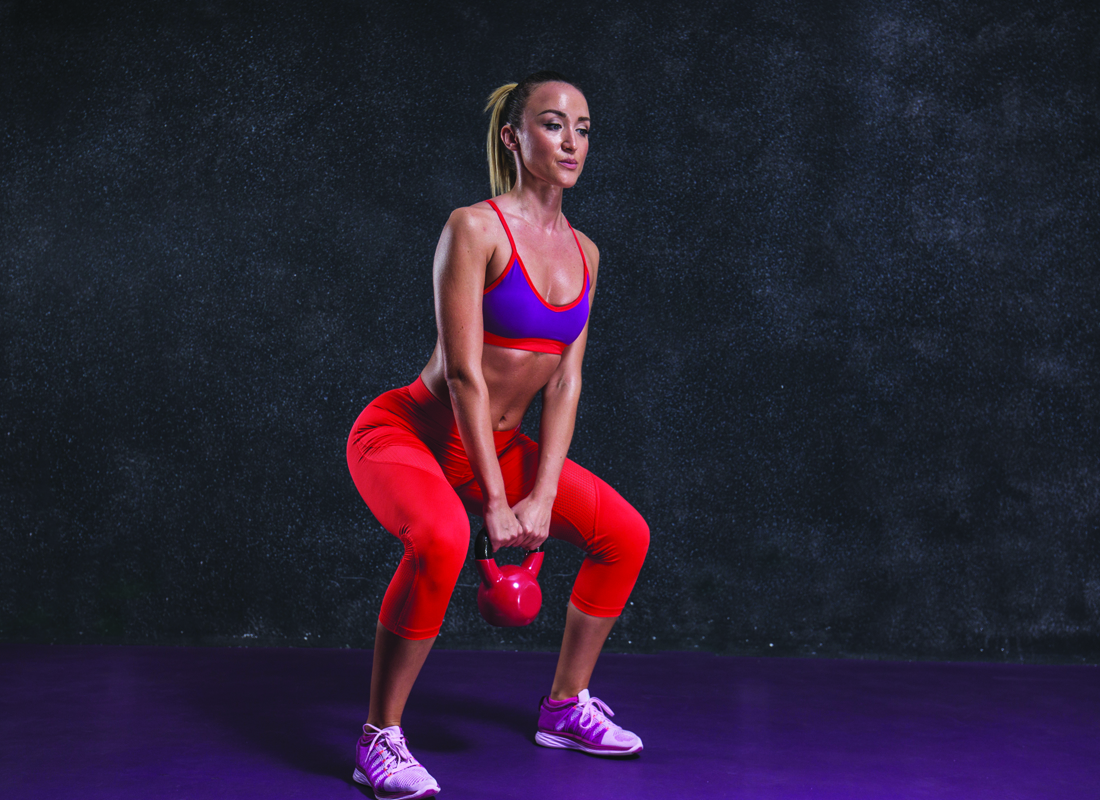 KETTLEBELL SWINGS
KETTLEBELL SWINGS
Drive and explode from the legs and hips.
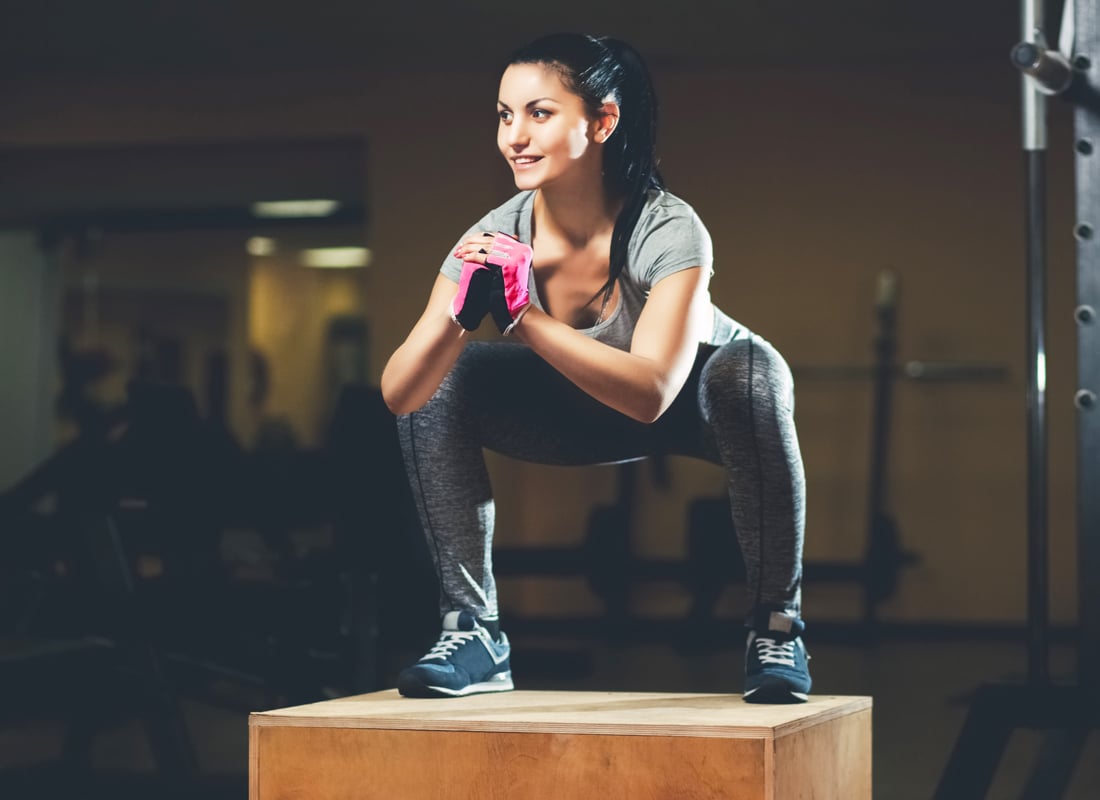 BOX JUMPS WITH STEP DOWN
BOX JUMPS WITH STEP DOWN
Once you’ve jumped onto the box, stand up with your hips over your feet and then step down.
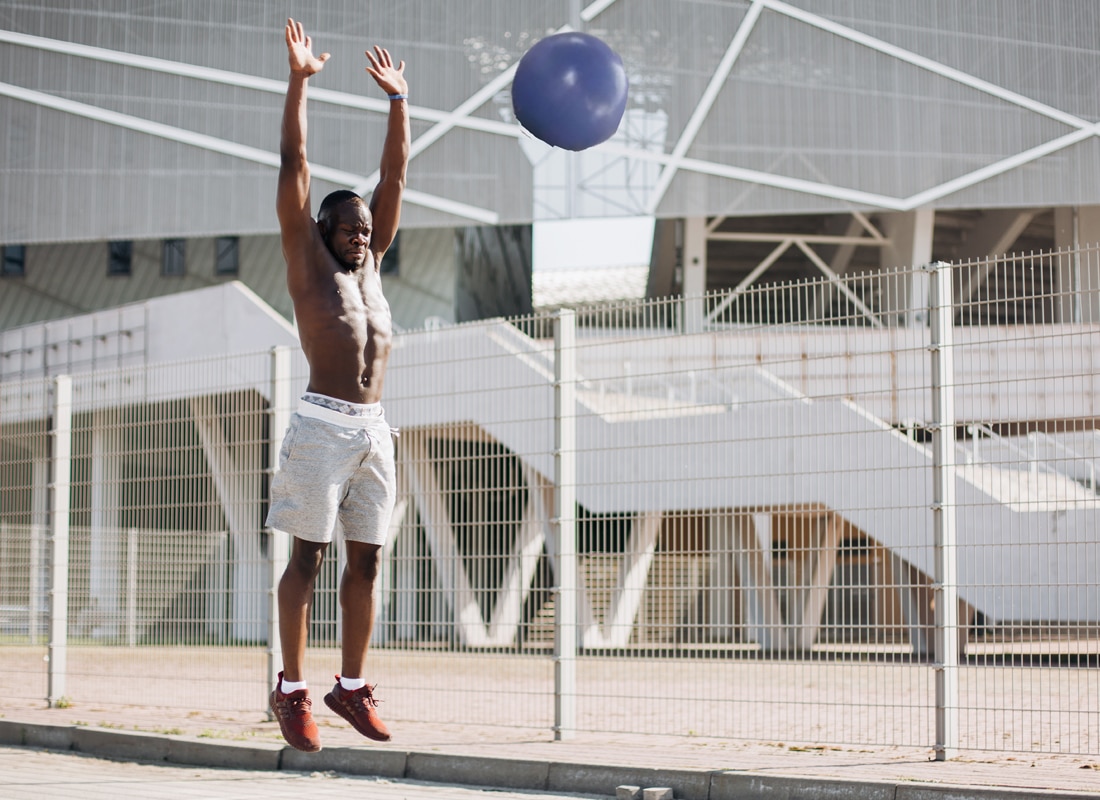 BURPEES WITH MEDICINE BALL TOSS
BURPEES WITH MEDICINE BALL TOSS
Jump the feet back; stand up and toss the medicine ball overhead or to the trainer.
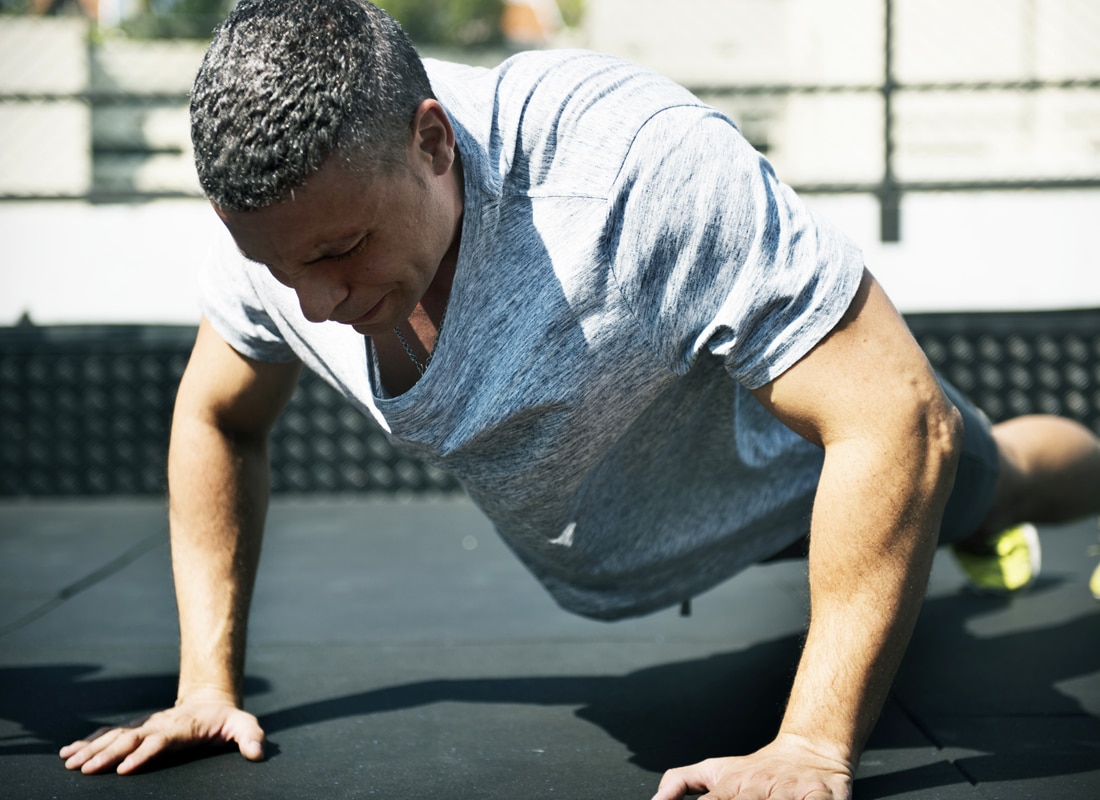 DYNAMIC PUSHUPS
DYNAMIC PUSHUPS
Try to momentarily leave the ground with
arms extended.
 JUMP SQUATS
JUMP SQUATS
From the bottom of the squat, powerfully
explode straight up, bringing your knees toward your chest while in midair.
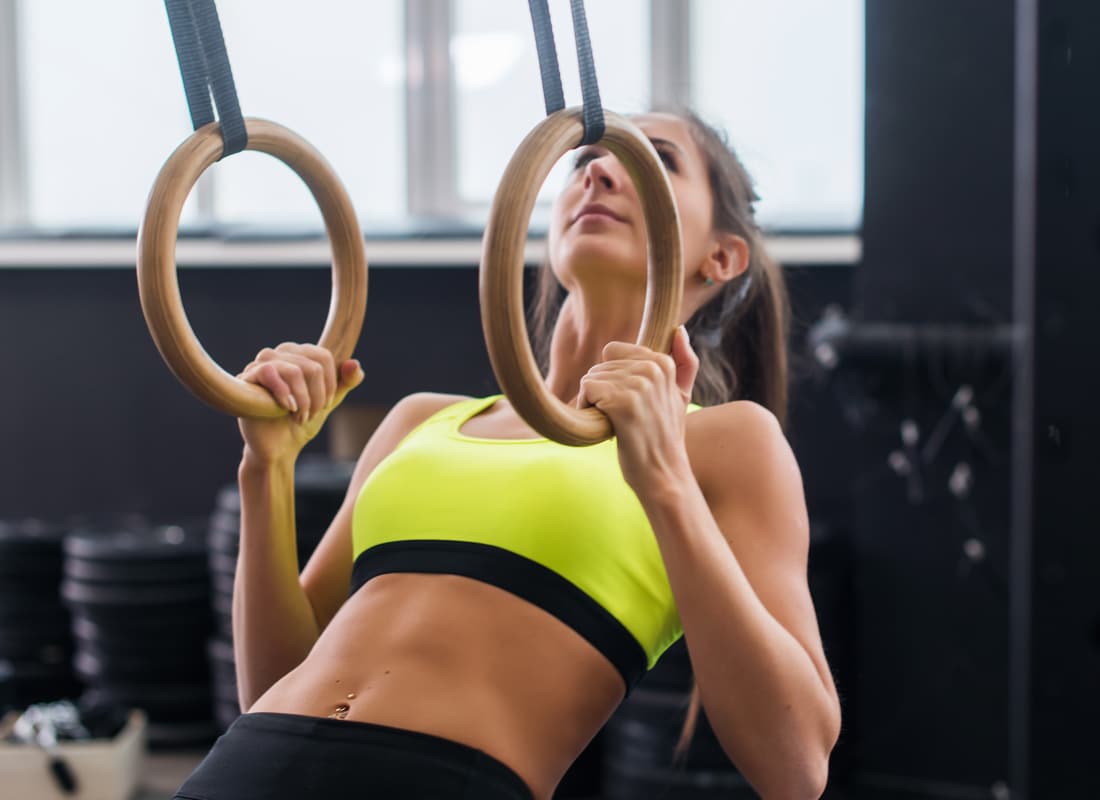 RING ROWS
RING ROWS
Brace the abdominal and gluteal muscles and keep the body straight.
Len Kravitz, PhD
Len Kravitz, PhD is a professor and program coordinator of exercise science at the University of New Mexico where he recently received the Presidential Award of Distinction and the Outstanding Teacher of the Year award. In addition to being a 2016 inductee into the National Fitness Hall of Fame, Dr. Kravitz was awarded the Fitness Educator of the Year by the American Council on Exercise. Just recently, ACSM honored him with writing the 'Paper of the Year' for the ACSM Health and Fitness Journal.


